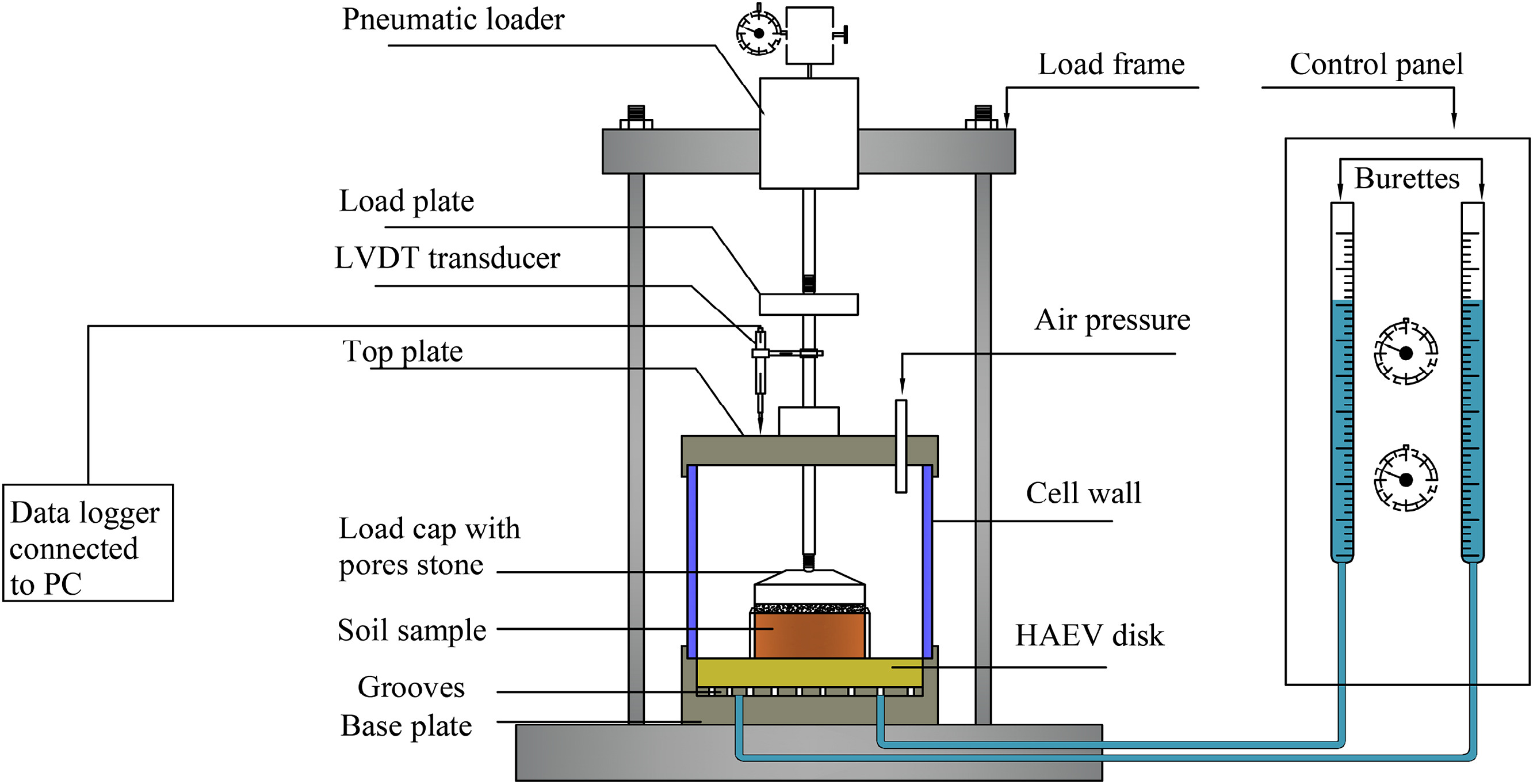JRMGE / Vol 13 / Issue 5
Hydromechanical behavior of unsaturated expansive clay under repetitive loading
Ahmed M. Al-Mahbashi, Mosleh A. Al-Shamrani, Mohammad F. Abbas
Show More
a Bugshan Research Chair in Expansive Soils, Department of Civil Engineering, King Saud University, Riyadh, 11421, Saudi Arabia
b Civil Engineering Department, Prince Sattam bin Abdulaziz University, Al-Kharj, 11942, Saudi Arabia
c Soil Mechanics and Geotechnical Engineering Research Institute, Housing and Building National Research Center (HBRC), Giza, 11511, Egypt
2021, 13(5): 1136-1146. doi:10.1016/j.jrmge.2021.05.002
Received: 2020-09-22 / Revised: 2021-04-22 / Accepted: 2021-05-03 / Available online: 2021-06-23
2021, 13(5): 1136-1146.
doi:10.1016/j.jrmge.2021.05.002
Received: 2020-09-22
Revised: 2021-04-22
Accepted: 2021-05-03
Available online: 2021-06-23
Compacted layers of expansive soils are used in different engineering projects, such as subgrades, engineered clay barriers, and buffers for radioactive waste disposal. These layers are exposed to a variety of stresses and wetting conditions during field serviceability. Coupling between hydraulic and mechanical repeated loading provides insight understanding to the induced progressive deformation of expansive clay. This study was conducted to investigate the hydromechanical behavior of unsaturated compacted expansive clay under repeated loading–unloading (RLU) conditions. Two series of one-dimensional (1D) oedometer tests were conducted under controlled matric suction up to 1500 kPa using the axis translation technique (Fredlund soil-water characteristic curve device, SWC-150). The first test series was carried out at different levels of controlled matric suction for non-repeated loading–unloading (NRLU) cycles. RLU cycles were applied in the second test series at different repetitive-stress levels and under different levels of matric suction. The results indicated increasing axial wetting strain εa(s), axial swell pressure σs(s), compression index Cc(s), and swell index Cs(s) with suction reduction. The estimated load–collapse (LC) curves obtained from NRLU series (LCN) and RLU series (LCR) indicated increasing yield stress σy(s) with increasing suction. This is attributed to the developed apparent cohesion between soil particles, which in turn rigidifies the material response. Applying repetitive loading induced a notable reduction of compression index Cc(s) at the same level of suction, whereas swell index Cs(s) seems to be independent of repetitive loading. Finally, repetitive loading exceeding initial yield stresses results in plastic hardening and, hence, enlargement of yield stress locus (i.e. LCR curve).
Keywords: Expansive clay, Repetitive loading, Suction, Hydromechanical behavior, Load–collapse curve
Article Data
Author(s) Information
Dr. Ahmed M. Al-Mahbashi
aalmahbashi@ksu.edu.sa

Ahmed Al-Mahbashi is currently a researcher in the Bugshan Research Chair in Expansive Soils at King Saud Univerity and was involved in teaching as a lecturer in the Department of Civil Engineering at the same university. He has obtained his MSc degree in Civil Engineering, College of Engineering University of King Saud, Saudi Arabia in 2014. He has graduated with a BSc degree from Sanaa University in 2008 and worked there as an Assistant teacher, and then he was also involved as a site engineer in the Ministry of Public Works and Highways in Yemen. As a geotechnical engineer, his research interest in the field of unsaturated expansive soils involving geotechnical characterization, hydromechanical and mechanical behavior, improvement, and assessment of swelling behavior. He also worked on the applications of swelling clays in the field of geotechnical and geoenvironmental disciplines. He has participated in several funded projects, and also has published several research results in refereed scientific journals and conference proceedings.

